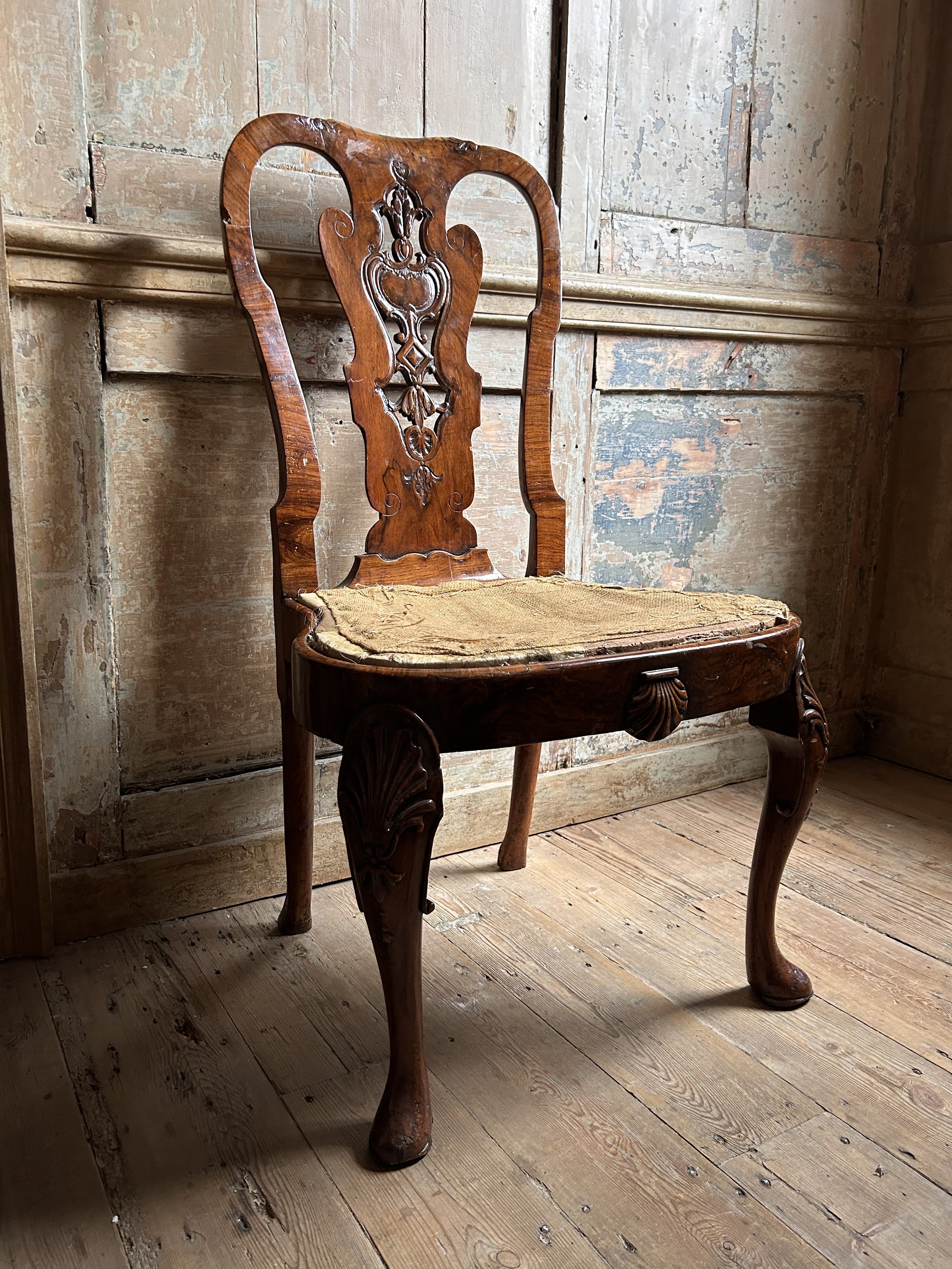 Image 1 of 10
Image 1 of 10

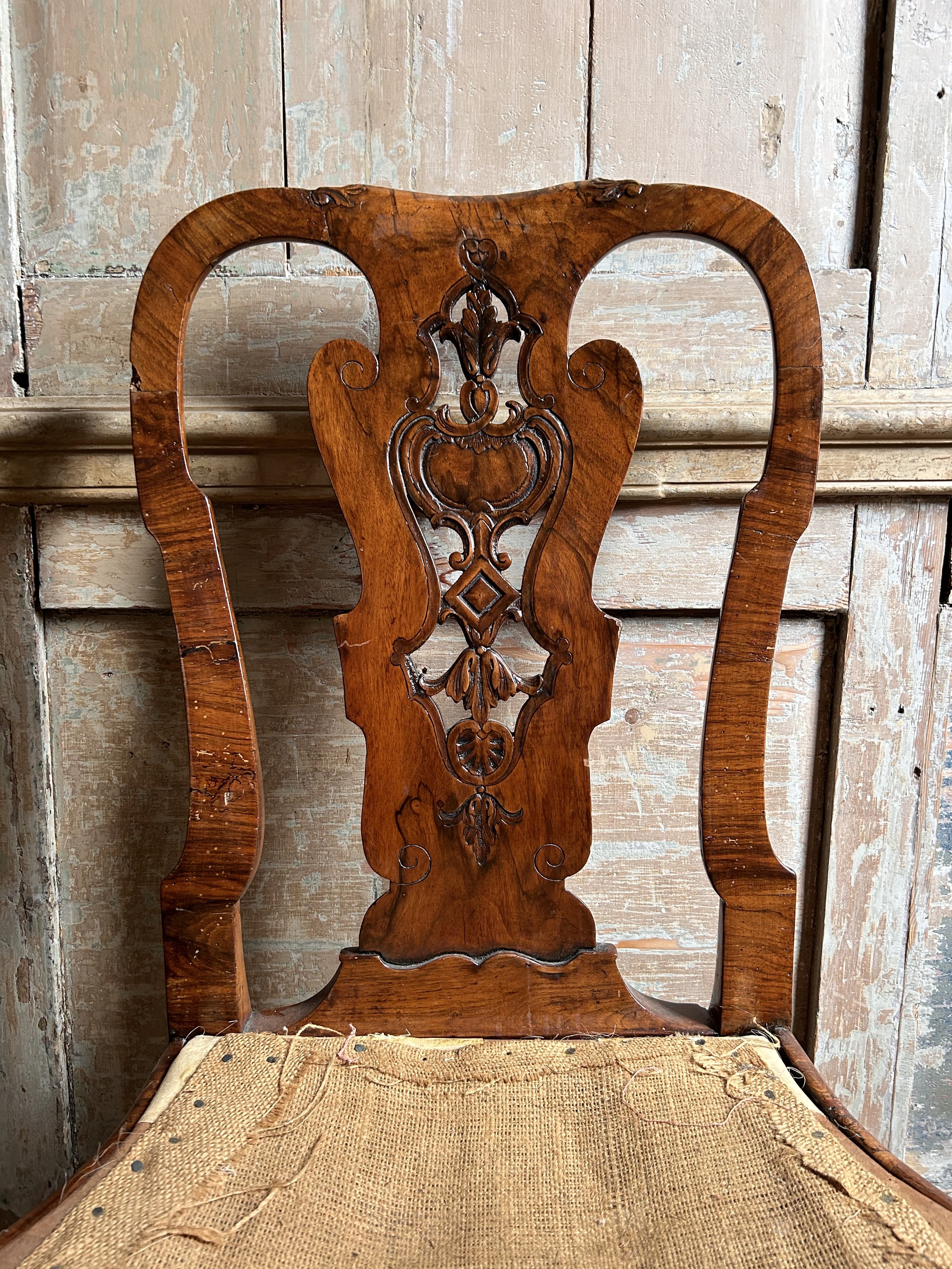 Image 2 of 10
Image 2 of 10

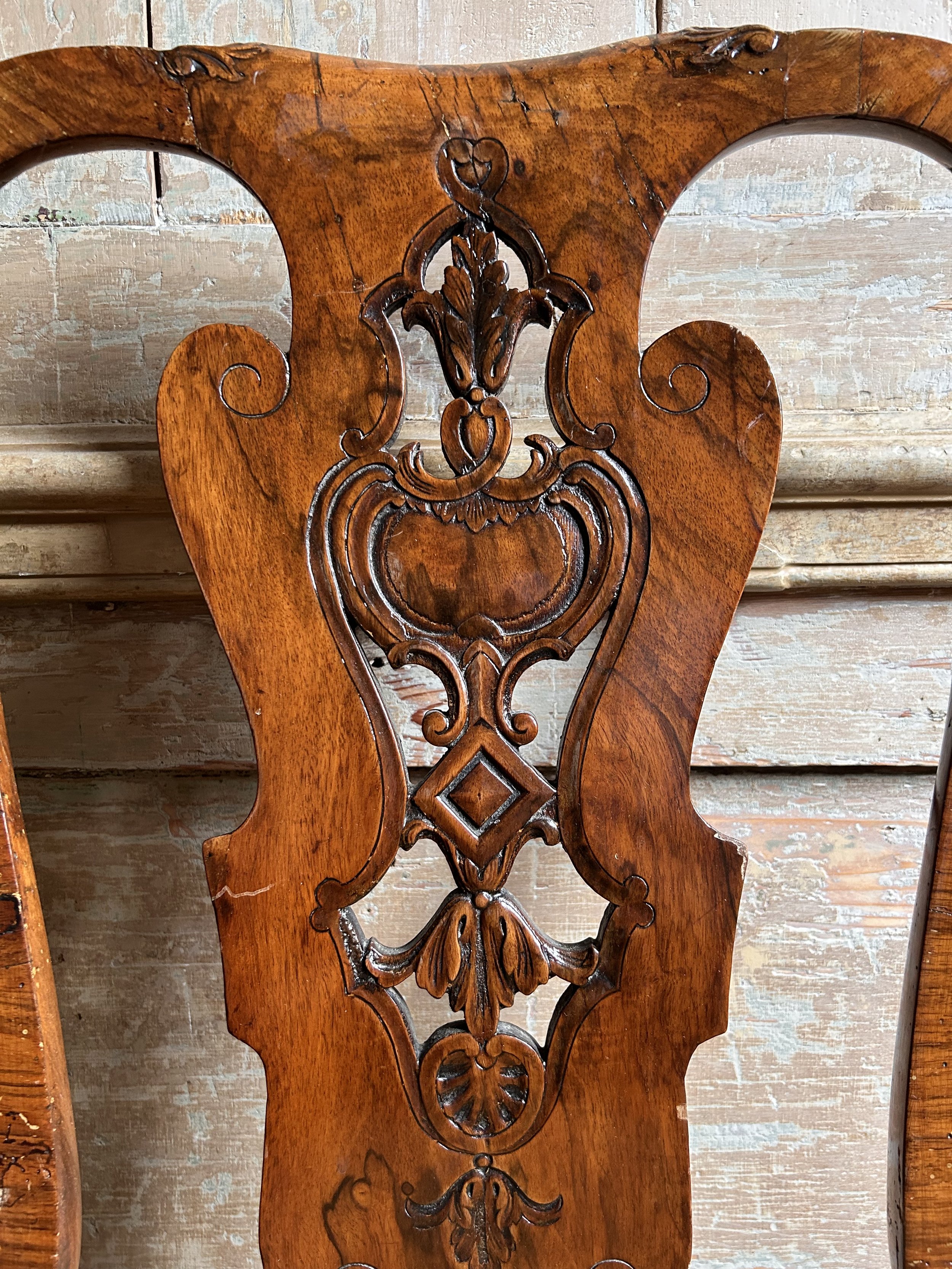 Image 3 of 10
Image 3 of 10

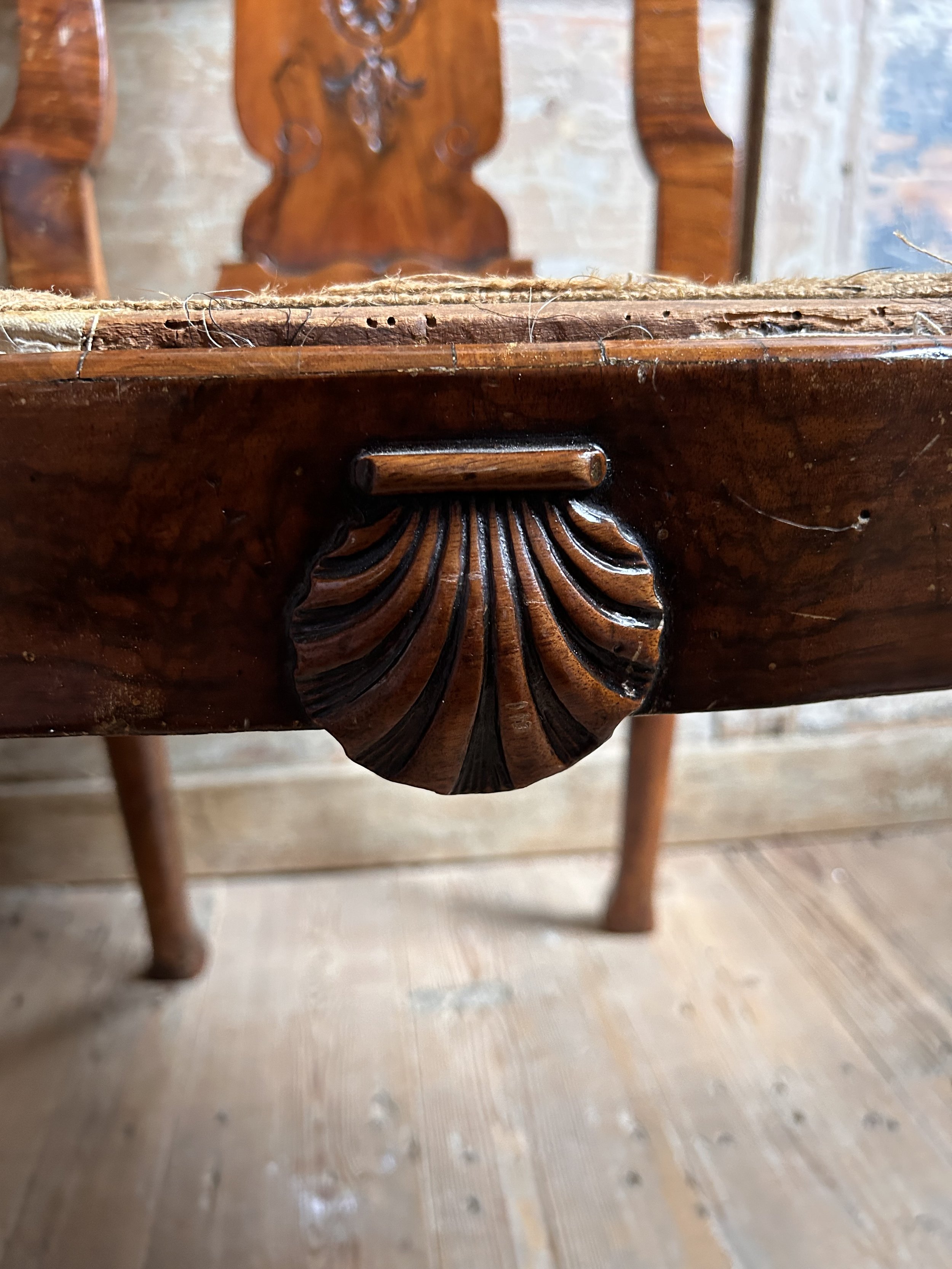 Image 4 of 10
Image 4 of 10

 Image 5 of 10
Image 5 of 10

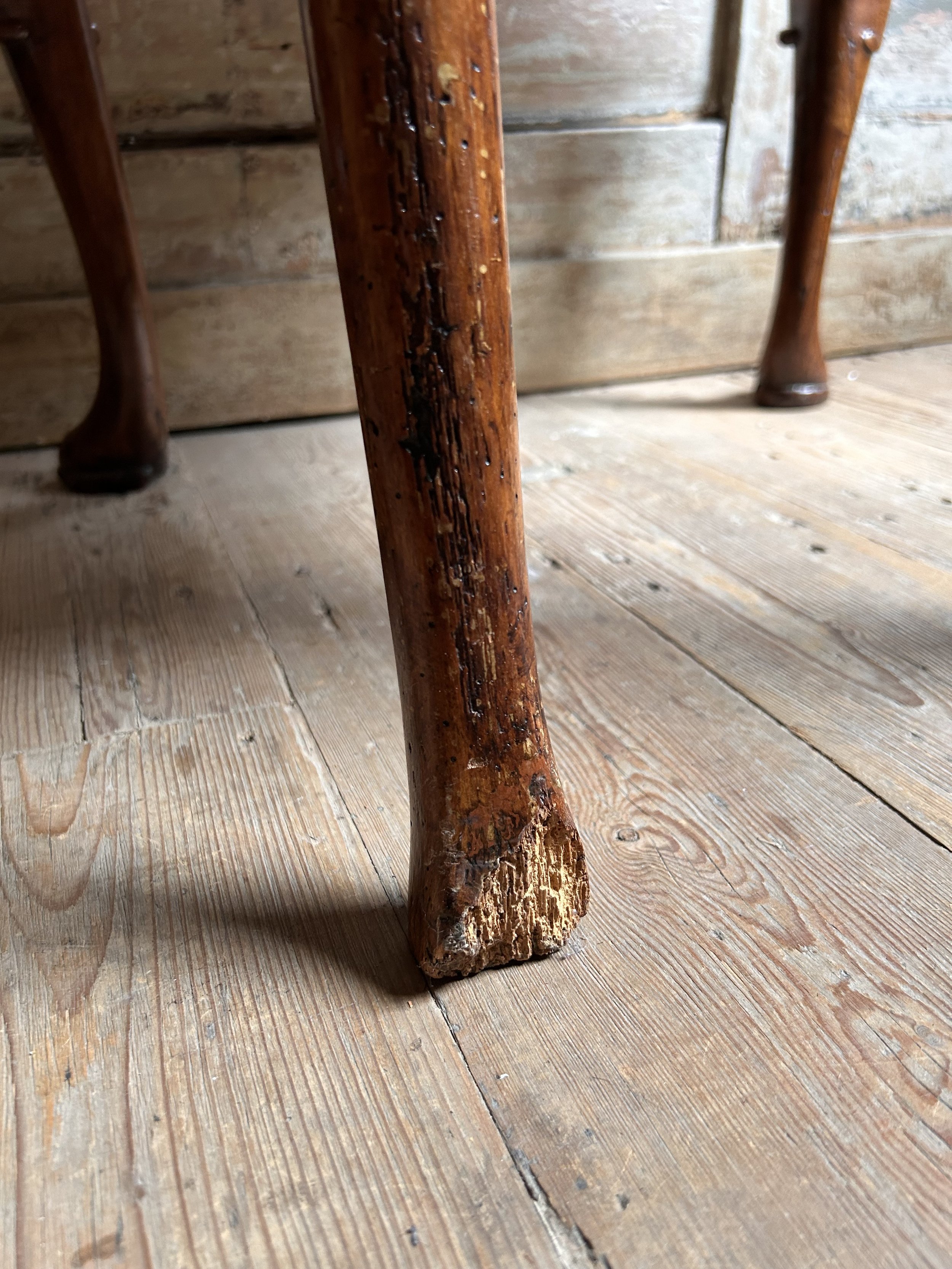 Image 6 of 10
Image 6 of 10

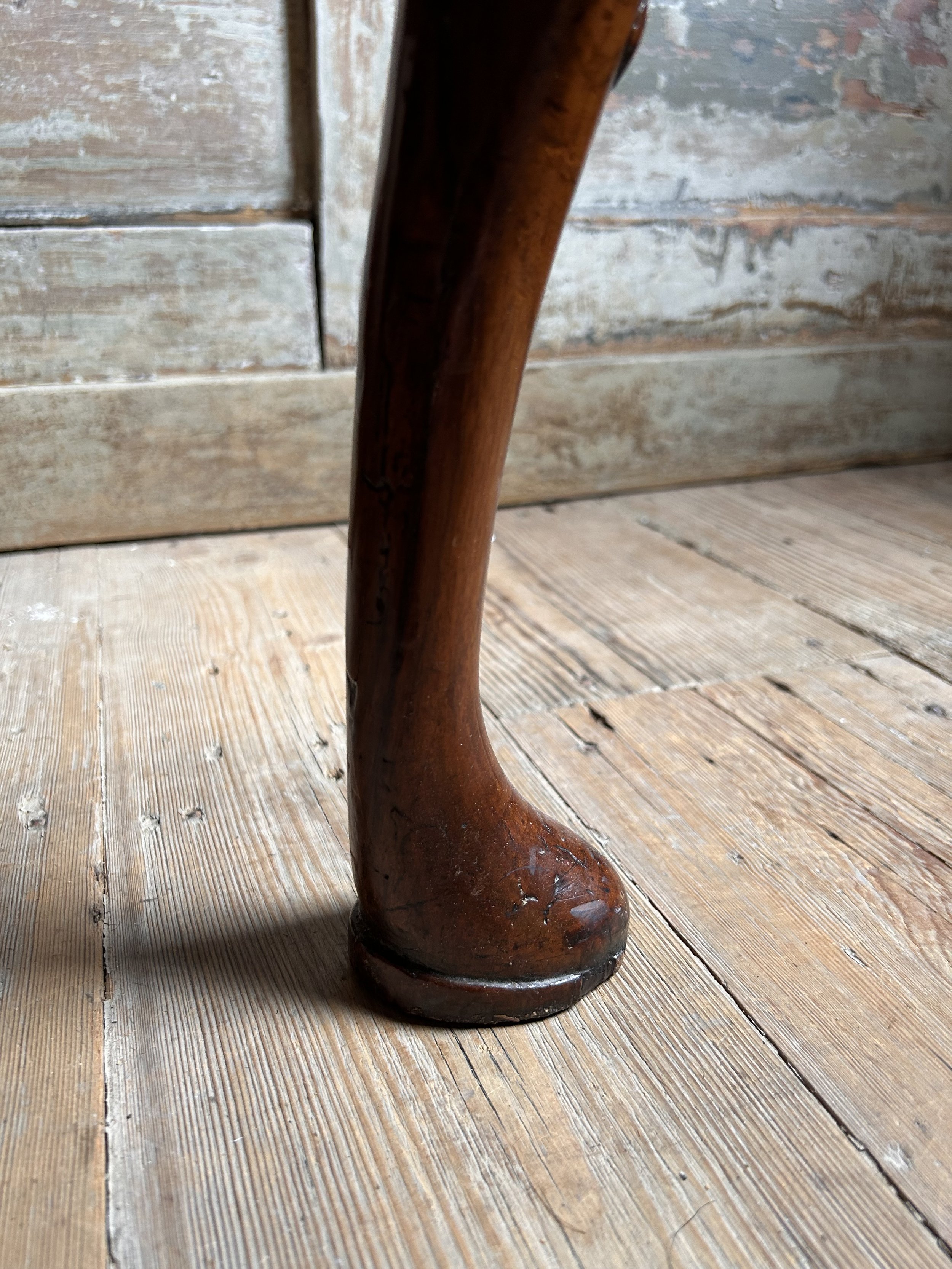 Image 7 of 10
Image 7 of 10

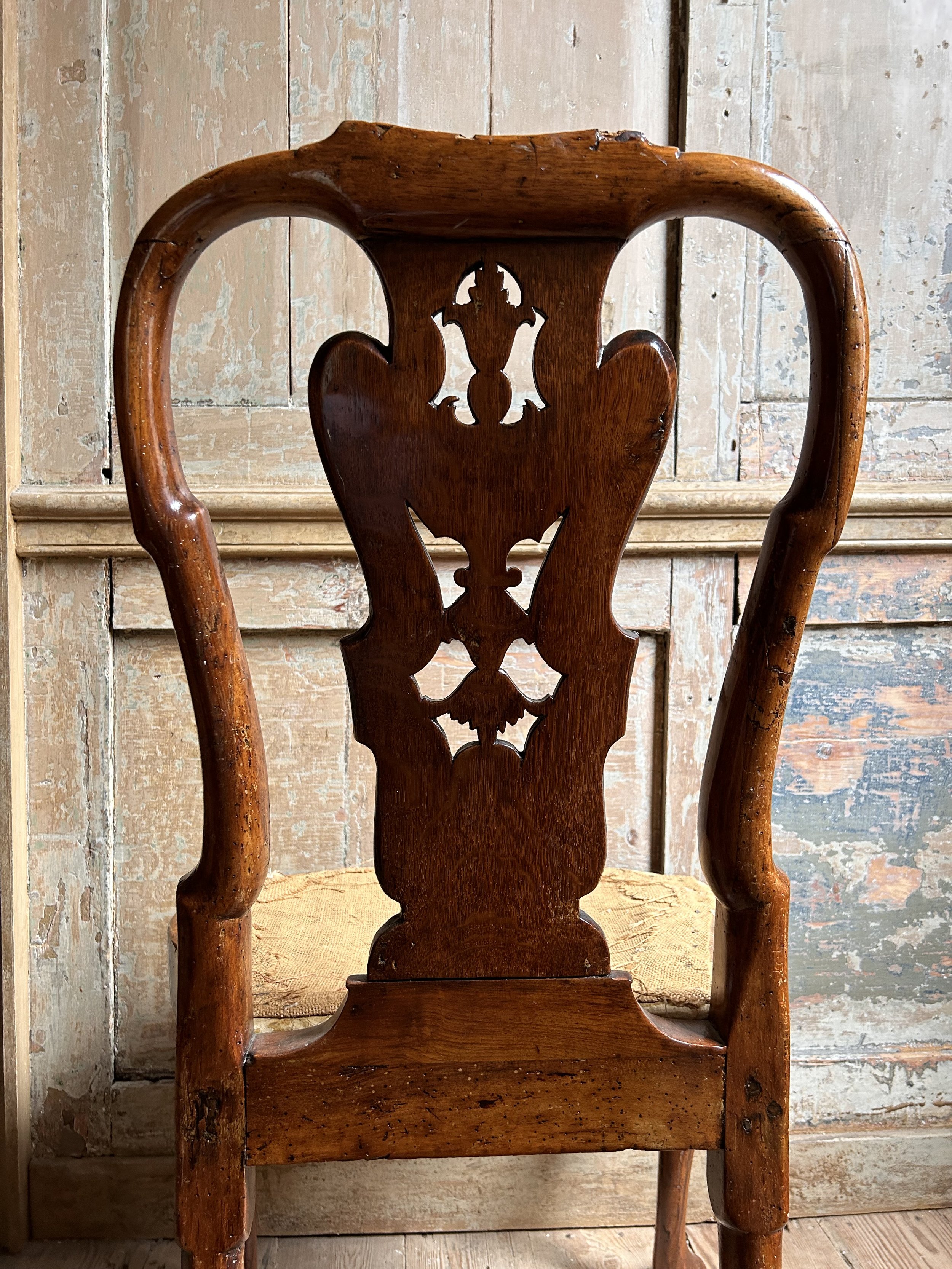 Image 8 of 10
Image 8 of 10

 Image 9 of 10
Image 9 of 10

 Image 10 of 10
Image 10 of 10











An early 18th walnut side chair of unusual “transitional” form
An early 18th walnut side chair of unusual “transitional” form. English, circa 1730. This chair, with its pierced back-splat, shows a development of the baroque form popularised by Daniel Marot. An earlier form of chair, with a similarly pierced splat, was supplied to George 1st in 1717 by Richard Roberts (Illustrated by Adam Bowett in “The Bended Back Chair”, page 11). A chair from the same set is in the V&A - accession number W.28-1909. The instant example is of a stronger “English Georgian” character - and has a number of indicators of quality:
Pierced back-splat which is veneered. The surface of the veneer is also carved in order to continue the design. Veneered side rails and seat rails. Carved “Cupid’s bow” serpentine block at base of back splat.
Compass seat. Carved “Venus shell” to the front rail. The knees are also carved with shells and bellflowers. Cabriole legs with pointed pad feet. Good colour and patination. Original surface. This chair would probably have originally had “ears” at the top of the front legs, which are absent.
It seems likely that the maker of this unusual chair was probably influenced by an early pattern book.
Measures 54cm w x 96cm h x 50cm d x 45cm seat height
An early 18th walnut side chair of unusual “transitional” form. English, circa 1730. This chair, with its pierced back-splat, shows a development of the baroque form popularised by Daniel Marot. An earlier form of chair, with a similarly pierced splat, was supplied to George 1st in 1717 by Richard Roberts (Illustrated by Adam Bowett in “The Bended Back Chair”, page 11). A chair from the same set is in the V&A - accession number W.28-1909. The instant example is of a stronger “English Georgian” character - and has a number of indicators of quality:
Pierced back-splat which is veneered. The surface of the veneer is also carved in order to continue the design. Veneered side rails and seat rails. Carved “Cupid’s bow” serpentine block at base of back splat.
Compass seat. Carved “Venus shell” to the front rail. The knees are also carved with shells and bellflowers. Cabriole legs with pointed pad feet. Good colour and patination. Original surface. This chair would probably have originally had “ears” at the top of the front legs, which are absent.
It seems likely that the maker of this unusual chair was probably influenced by an early pattern book.
Measures 54cm w x 96cm h x 50cm d x 45cm seat height
